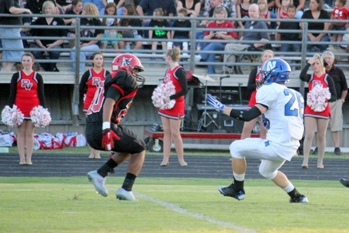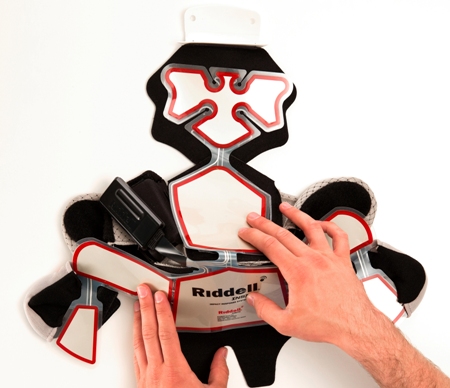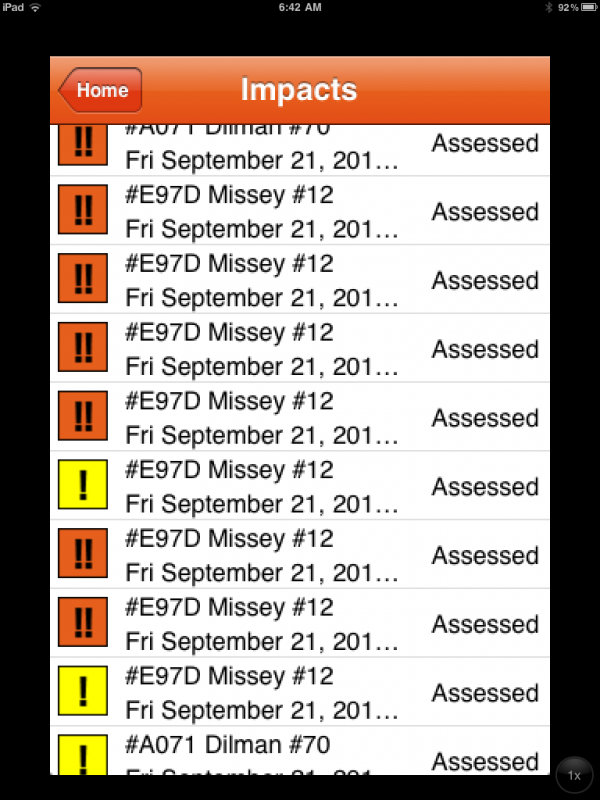Chronic underreporting of concussion
One of the biggest hurdles to appropriate clinical management of sports concussion is identifying athletes for an initial assessment on the sports sideline. Many sports concussion go undetected, say experts, either because athletes don't recognize that they have symptoms of concussion or are reluctant and/or refuse to self-report such symptoms, or because sideline personnel or game officials lack the necessary training and experience to identify an athlete requiring assessment.
Early identification on the sports sideline of suspected concussion is critical because, in most cases, athletes who are immediately removed from contact or collision sports after suffering a concussion or other traumatic brain injury (TBI) will recover without incident fairly quickly.
If an athlete is allowed to continue playing after concussion, however, their
recovery is likely to take longer, and they may be at increased risk of
long-term problems (e.g. early dementia, depression, more rapid aging of the brain, and in rare cases, chronic traumatic encephalopathy, and, in extremely rare instances, catastrophic injury or death.

The evidence that concussions are significantly under-reported is substantial. [1-9] As a 2013 research paper [7] and a number of other recent studies[12-15] show, education alone (or at least that which focuses on educating athletes about the signs and symptoms of concussion and not changing attitudes about reporting behavior) does not appear capable of solving the problem, because the reasons for under-reporting are largely cultural, [2,3,9,10, 12-15] leading the paper's author to conclude that "other approaches might be needed to identify injured athletes."
Are sensors the answer?
One way, I believe, to address the problem of under-reporting and increase the chances a concussion will be identified early on the sports sideline may be to rely less on athletes themselves to remove themselves from games or practices by reporting concussion symptoms (which the most recent study shows occurs at a shockingly low rate,[9] or on game officials and sideline observers to observe signs of concussion and call for a concussion assessment, but to employ technology to increase the chances that a concussion will be identified by employing impact sensors designed to monitor head impact exposure in terms of the force of hits (both linear and rotational), number, location, and cumulative impact, in real time at all levels of football, and in other helmeted and non-helmeted contact and collision sports, where practical, to help identify high-risk impacts and alert medical personnel on the sideline so they can consider performing a concussion assessment.
Contrary to some media reports, impact sensors used in this fashion are not intended to replace sideline observers, game officials, coaches, and teammates, who, if they observe an athlete exhibiting signs of concussion, can trigger a sideline screening for concussion using one or more assessment tools (eg. SAC, SCAT3, BESS, King-Devick, Maddocks questions), but simply to be another tool in the concussion toolbox or, put another way, another set of eyes. Like those assessment tools, the fact that a sensor triggers an alert - or fails to set off an alert - is not intended to rule an athlete in or out of action or in any way diagnose concussion.[11]
Benefits of real-time hit monitoring
"The identification of a potentially injurious impact or series of impacts via real-time monitoring of head impact exposure in athletes may [not only] facilitate the early recognition and management of brain injury in helmeted sports," argues Richard M. Greenwald, PhD of the Thayer School of Engineering at Dartmouth College, in an editorial in the March 2012 Clinical Journal of Sports Medicine, [12] but "permit early intervention, potentially in advance of an injury, rather than simply as a management tool postinjury."
While equipping a team with impact devices may be cost-prohibitive,[15] and while impact monitoring will not eliminate brain injuries altogether, the benefits of early identification and prevention of further injury are numerous, writes Greenwald:

- Sideline personnel will benefit from objective data that might inform their medical decisions;
- Parents and coaches will benefit from reduced reliance on honest self-reporting of concussion symptoms by athletes and of the less-than-perfect observational skills of sideline management in spotting signs of concussion;
- Teams will benefit by having healthy, unimpaired athletes on the more often; and
- The student-athlete and professional athlete will benefit the most from reduced exposure to potentially injurious blows and from the "conundrum of having to self-report an injury that they may not recognize as being potentially injurious or dangerous in the moment of competition" (or as recent studies [10,15] show, they know is potentially dangerous but choose not to report because they fear being punished by the coach for doing so, such as by removing them from a starting position, reducing future playing time, or inferring in front of teammates that reporting symptoms made them "weak.").
As co-founder of Simbex, LLC, the Lebanon, New Hampshire company that makes the HITS (Head Impact Telemetry System) - a peer-reviewed, scientifically-validated technology used by researchers in biomechanical studies to measure head impacts on the playing field, and a version of which is now in the Riddell InSite Impact Response System - Greenwald knows a thing or two about the technology of head impact exposure monitoring. That his company might benefit from the widespread monitoring he and his colleagues at Simbex propose in the editorial, however, does not make their recommendation any less important.
Greenwald is not alone in trumpeting the potential benefit of impact sensors in identifying athletes for sideline screening for concussion. Writing about head impact sensors in the March 2013 issue of the British Journal of Sports Medicine,[13] Jeffrey S. Kutcher, MD, of the Department of Neurology and Michigan Neurosport at the University of Michigan, concurs that the "development of easily deployable sport equipment-based accelerometer systems ... provide[s] [a] potentially useful, clinical information."
 "The first is the ability to monitor impacts during the course of an
athletic event for the purpose of screening for potential injury.
Although many researchers have analyzed impact counts and
characteristics across a variety of settings in the hopes of
establishing force 'thresholds' for injury, no such threshold has been
discovered. As efforts to improve impact-monitoring accuracy continue,
however, so will the search for the 'concussion threshold.'"
"The first is the ability to monitor impacts during the course of an
athletic event for the purpose of screening for potential injury.
Although many researchers have analyzed impact counts and
characteristics across a variety of settings in the hopes of
establishing force 'thresholds' for injury, no such threshold has been
discovered. As efforts to improve impact-monitoring accuracy continue,
however, so will the search for the 'concussion threshold.'"
"Although an on-board accelerometer system may not be able to accurately predict injury," says Kutcher, "it may have utility as a screening device by alerting sideline personnel of an impact that has occurred above a predetermined magnitude that triggers either observation or clinical evaluation of an athlete."
Track cumulative impact
Kutcher also sees a second a second potential clinical benefit of impact monitoring systems, one which "stems not from the idea of monitoring impacts for the presence of an acute injury-generating hit, but from the potential advantage of accurately cataloguing the number of hits and post-impact head acceleration being experienced by an athlete over time."
"Some have suggested that the idea of a 'hit count' that is kept for athletes over the course of a game, practice, week, month, season or career. This concept is fairly new and, as yet does not have published data to suggest that any particular level or number of hits has significant clinical meaning for any particular sport or position. Nonetheless, individual athletes may feel there is a benefit to having an estimate of forces their brain experiences over time." [13]
A study by researchers at the University of Michigan[15] views such suggestions as having "merit," noting that, while sensors may currently be beyond the reach of most football programs, a "number of companies are developing innovative, low-cost technologies that will make instrumentation both practical and feasible."








